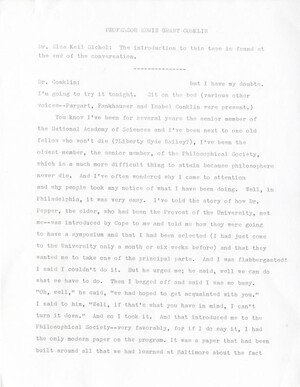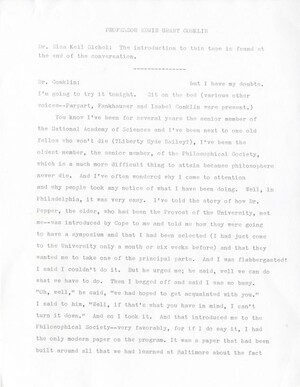- John Philip Trinkaus
- Early Life
- Trink’s Undergraduate Research at Wesleyan University
- Trink's First Visit to the MBL
- Trink and the MBL Embryology Course
- Trink's Graduate Research at Johns Hopkins University
- New Location & New Research Problem
- Fundulus as Choice Organism
- Trink's work on the Yolk Syncytial Layer (YSL) in Fundulus Epiboly
- Trink’s MBL Research on Cell Motility with C. A. Tickle
- Conclusion
- Alfred Huettner
- Cathy Norton
- China at the MBL: 1920-1945
- Collecting at the MBL
- Cyclins at the MBL
- Edmund Beecher Wilson
- Edwin Grant Conklin
- Envisioning the MBL: Whitman’s Efforts to Create an Independent Institution
- Eugene Bell Center for Regenerative Biology and Tissue Engineering 2010-2018
- Shinya Inoué: Capturing Dynamic Cellular Processes
- Squids, Axons, and Action Potentials: Stories of Neurobiological Discovery
- The Biological Bulletin
- The Ecosystems Center (1975-2018)
- The MBL Embryology Course 1939
- The Marine Biological Laboratory
- The Neurobiology of Vision at the MBL
- Using Biodiversity
- Collecting Methods & Surveys
- “Report upon the Invertebrate Animals of Vineyard Sound and Adjacent Waters, with an account of the Physical Features of the Reg
- “A Biological Survey of the Waters of Woods Hole and Vicinity. Part III. A Catalogue of the Marine Fauna” (1913)
- Methods for Obtaining and Handling Marine Eggs and Embryos (1957)
- Experiments
- Supply & Sale
- Collecting Methods & Surveys
- Viktor Hamburger and Experimental Embryology
- Visual Media in Embryology
- Woods Hole 150
Huettner’s presentation of vertebrate embryology is remarkable especially for its illustrations. These images on the printed page often look three-dimensional and provide detail and clarity of each case. He noted that he used line drawings in most cases because they were clearer than more complex alternatives, and they could be colored to highlight selected parts. In the introduction to the book, he advised his reader to use colored pencils or crayons to bring out features of the illustrations, for example, highlighting the germ layers. The book remained in print for more than forty years, which is a very unusual achievement in an active scientific field, and was used as a valuable textbook for embryologists. Huettner's original drawings are deposited in the MBL Archives.
- Donald Lancefield, “Alfred F. Huettner, Scientist and Teacher,” Science. 1955: 122: 953.
- Jo Hall, “Brothers excelled in Photography,” Mobridge Tribune (June 15, 1988) p. 7



